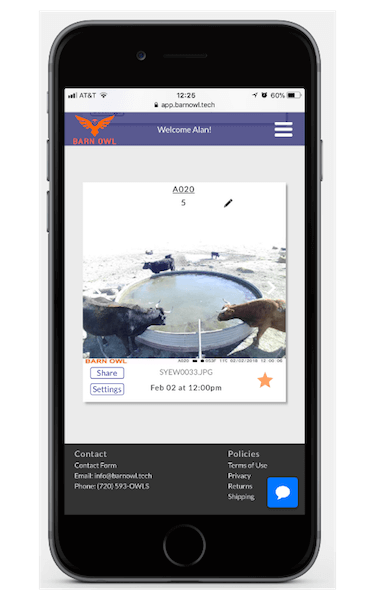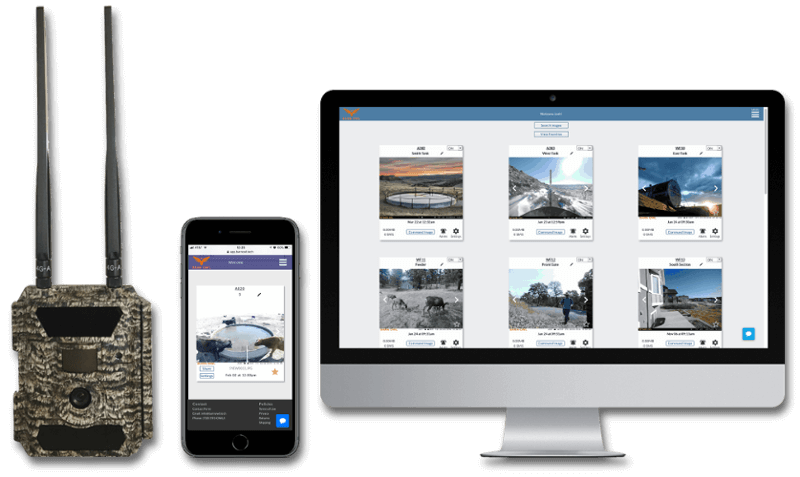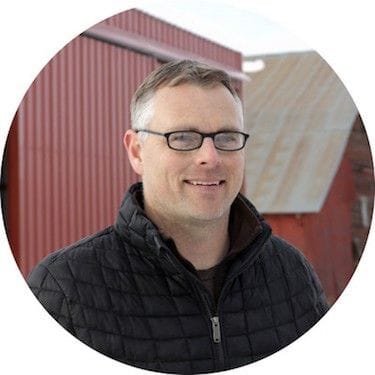Josh Phifer is the CEO of Barn Owl, a remote monitoring platform for ranchers, farmers, and asset managers. He has an MBA from Wharton following a career as an US Air Force fighter pilot.
How did you become interested in AgTech?
I started Barn Owl to solve a problem I grew up with on ranches in Wyoming and Nebraska — monitoring and managing assets spread out over many miles. Monitoring remote assets is a burden still faced by my friends and family in agriculture. Despite all of the surveillance technologies used by the military and other industries, rural businesses are left in the dark when it comes to surveillance systems. I don’t really consider us to be an ‘AgTech’ company. We provide remote surveillance solutions for agricultural businesses, other businesses with rural assets, and landowners.
I attended college at the Air Force Academy and flew jets for a number of years in the Air Force. After separating Active Duty a few years ago, went to Wharton to get an MBA. While at Wharton, I started working on an Internet of Things (IoT) startup for monitoring agricultural resources. In agriculture, water resources are extremely important, and we initially focused on building a custom water monitoring system for ranchers and farmers. After graduating Wharton, I returned to Colorado with my family, and attempted to take our IoT solution to market.
Unfortunately, we struggled to achieve product-market fit with our water monitoring solution. However, we did work with dozens of ranchers and farmers during our testing, and those early test customers led us to our new product, a remote surveillance solution using cameras, not IoT sensors. Developing the IoT product was a painful lesson learned in spending too much time and money on a pre-revenue product. With the camera system, we knew we needed something fast and cheap. I had taken a class on sourcing products from China, so I knew how to get the hardware. For the software, I remembered AirDev from when they were doing a promotion at Wharton to build an app in 2 weeks for $4,000, which is how we heard of Bubble. We decided to try Bubble since we didn’t have the resources for custom code.

What was the pivoting process like from your first startup to Barn Owl?
We learned a lot from our initial failure. Most importantly, we learned to work closely with initial customers to solve their problems with a solution they actually want to use. We’ve always been focused on solving real problems, but the first time around we completely screwed up the solution because we bet on technology and not on customer feedback. We love how Bubble has allowed us to implement customer feedback into our app so quickly and cheaply. We are a bootstrapped company, and there’s no way we could have bootstrapped if we had to pay for custom app development. Another big lesson we learned is that most customers value price and simplicity, this is particularly true in agriculture where profit margins are usually quite thin. Keeping our solutions simple and affordable is the driving force behind our product strategy.
The second time around, we reached out to our existing customers from the first startup instead of just working on a hypothesis. Our customers told us water monitoring data in a dashboard is ok but pictures are better. We took that feedback and started simple in Bubble. We displayed a list of photos coming from a cellular camera. Then we added lists within lists for multiple cameras. Over time, we added advanced features for managing cellular connectivity, remotely controlling cameras, managing photos and videos, and enabling customers to easily share the surveillance data. For camera hardware, we use cellular-connected hunting cameras and turn them into a business solution. We’ve done a lot of work with cellular data providers to create affordable and flexible data plans for our customers.
To combine hardware and software, we were inspired by monarch SCADA which is a controls architecture platform used in cities for buildings, water flow, vehicle GPS tracking, fire monitoring and suppression systems. We adapted compact urban architecture to ranches that have assets spread over hundreds of square miles. It takes a long time to drive around and check if there is water in the water tank, is the gate closed, is there feed? Now with cameras, people are using it for multiple applications from security for cabins and fuel tanks to checking if the corn was watered and then remotely turning on sprinklers. All cameras are connected via cellular network to cell towers to an AWS Lambda backend for image processing and then displayed on our Bubble app to customers.
Viewing from present day, how did your Air Force background prepare you to start a business?
In general, being in the military is comparable to starting a company in that you are constantly dealing with shortages. You rarely have as much time, people, equipment, etc. to accomplish a mission as you would like, so you learn to focus on what’s important, operate efficiently, and manage shortfalls when they happen. As a fighter pilot specifically, you learn to be a constant decision maker. When you’re flying a jet, there is no way to hit the pause button, so you learn to quickly make the best decision you can with the limited information you have. You also learn to communicate clearly and effectively. Because time is limited, you must quickly get your team executing the same plan, even if it’s not the best plan. It’s better to execute aggressively on a plan that’s not perfect than to not make a decision.
How are you helping other entrepreneurs get started?
I serve as a mentor to an accelerator called Exponential Impact, a GAN network accelerator in Colorado Springs focused on AI, blockchain, and cybersecurity. I also serve on the council for Peak Startup, and organization that is fostering the startup community in Colorado Springs. Colorado Springs is a great place to live and work, and we are excited about the growth potential of Colorado Springs as a tech startup city.

How do you plan to expand Barn Owl over the coming months and how can Bubble help?
We are excited about the potential that 5G has for cellular cameras and surveillance. We plan to expand our camera options and capabilities, and 5G will enable us to provide video feeds from remote locations at an affordable price. We are not looking to fundraise at this time as we are already profitable and we are optimistic about our position to grow both revenue and profit this year. Our vision for Barn Owl is to be a true platform for cellular-connected cameras, where we can provide cameras, cellular connectivity, cloud infrastructure, front-end UI, and imagery analysis using machine learning. Customers can come to us and choose which components of the platform they need from us, then build a custom solution for their market. We want our customers to be able to rapidly develop niche applications using Bubble.
Bubble can help by adding more documentation for different audiences. For our customers, we would like a class for customizing Bubble applications. For our own developers, we would like guides on app architecture for optimal performance. We know Bubble wants to help people build apps without code but when developers hit a brick wall, we often turn to code. Tutorials around connecting the no-code components with code will be very useful for advanced users.
Build for as long as you want on the Free plan. Only upgrade when you're ready to launch.
Join Bubble







